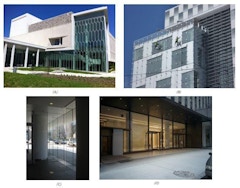Facade Embodied Carbon Reduction Strategies
Facades are increasingly being recognized as a major contributor to whole-building embodied carbon. While designers know how to reduce the embodied
Facades are increasingly being recognized as a major contributor to whole-building embodied carbon. While designers know how to reduce the embodied
Case study of the recently opened John A. Paulson Center for New York University in Manhattan reviews design solutions of façade depth and scale to


This study focuses on experiments in kinetics and architectural skins. More extensively, it introduces a solution for environmental design issues and

Traditional approach for engineering the facade is building an isolated analysis model. However, it inhibits a dynamic design process where

This case study focuses on the solutions provided for the Bell Museum at the University of Minnesota. Our design team worked with the client to


This research looks at the relationship of material and geometric distribution to set a methodology for integrating structural and thermal design.

Connections, those transitions between systems and materials, are critically important when the surfaces are curved or complex. Well-designed

With facades becoming increasingly more complex, and performance a key objective, expertise becomes an important component of successful design

What was once an accepted reality in heat-treated exterior glass, optical disturbances in glass are under increasing scrutiny by developers,



During the postwar era, and before the universal adoption of air-conditioning in the United States, leading architects participated in the design of
The use of glass in windows and curtain walls in residential as well as in commercial buildings needs to be designed very carefully. In addition to

Curtain wall is the prevailing type of enclosure on modern buildings because of its economy, its independence from structure that allows flexibility


Over the last two decades, in what has been coined “The Digital Turn”, the introduction of parametric design software has afforded increased

Structural glass is used in a range of building applications, and while the ASTM E1300 has recently been updated to provide a design method to